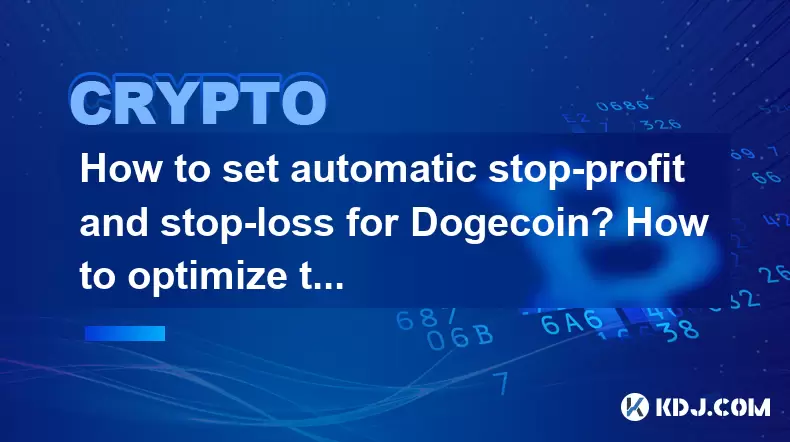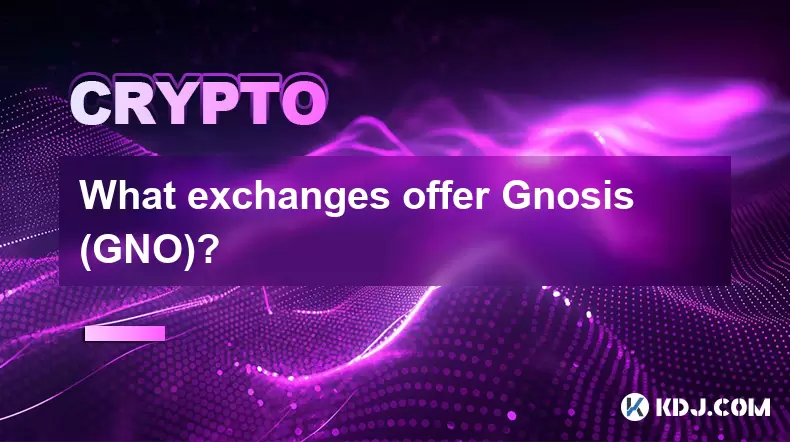-
 Bitcoin
Bitcoin $119000
-2.21% -
 Ethereum
Ethereum $4315
1.01% -
 XRP
XRP $3.151
-3.11% -
 Tether USDt
Tether USDt $0.0000
0.00% -
 BNB
BNB $808.5
-0.71% -
 Solana
Solana $175.8
-4.21% -
 USDC
USDC $0.9999
0.00% -
 Dogecoin
Dogecoin $0.2250
-3.92% -
 TRON
TRON $0.3469
1.77% -
 Cardano
Cardano $0.7818
-3.81% -
 Chainlink
Chainlink $21.47
-2.10% -
 Hyperliquid
Hyperliquid $43.30
-6.81% -
 Stellar
Stellar $0.4370
-2.84% -
 Sui
Sui $3.682
-4.40% -
 Bitcoin Cash
Bitcoin Cash $590.8
2.67% -
 Hedera
Hedera $0.2484
-5.20% -
 Ethena USDe
Ethena USDe $1.001
0.00% -
 Avalanche
Avalanche $23.10
-4.29% -
 Litecoin
Litecoin $119.2
-3.96% -
 Toncoin
Toncoin $3.409
0.90% -
 UNUS SED LEO
UNUS SED LEO $9.016
-1.29% -
 Shiba Inu
Shiba Inu $0.00001304
-3.82% -
 Uniswap
Uniswap $11.18
1.33% -
 Polkadot
Polkadot $3.913
-3.51% -
 Cronos
Cronos $0.1672
-3.08% -
 Dai
Dai $1.000
0.02% -
 Ethena
Ethena $0.7899
-4.70% -
 Bitget Token
Bitget Token $4.400
-1.23% -
 Pepe
Pepe $0.00001132
-5.93% -
 Monero
Monero $257.9
-6.44%
How to set automatic stop-profit and stop-loss for Dogecoin? How to optimize the trigger conditions?
Set stop-profit and stop-loss orders on Binance or Coinbase Pro to manage risks and secure profits when trading Dogecoin, adjusting based on market trends and volatility.
May 20, 2025 at 07:22 am

Setting automatic stop-profit and stop-loss orders for Dogecoin can significantly help manage risks and secure profits in the volatile cryptocurrency market. In this article, we will explore how to set up these orders on various trading platforms, and how to optimize their trigger conditions to suit your trading strategy.
Understanding Stop-Profit and Stop-Loss Orders
Stop-profit and stop-loss orders are essential tools for traders. A stop-profit order, also known as a take-profit order, is set to automatically sell your Dogecoin when the price reaches a certain level, locking in your profits. Conversely, a stop-loss order is designed to limit your losses by selling your Dogecoin when the price drops to a predetermined level.
Setting Up Stop-Profit and Stop-Loss Orders on Binance
Binance is one of the most popular platforms for trading cryptocurrencies, including Dogecoin. Here's how you can set up stop-profit and stop-loss orders on Binance:
- Log into your Binance account and navigate to the Spot trading section.
- Select the DOGE/USDT trading pair or any other pair you are trading with Dogecoin.
- On the trading interface, click on the "Order" tab and then select "Stop-Limit".
- To set a stop-profit order, enter the Stop Price at which you want the order to trigger, and the Limit Price at which you want to sell your Dogecoin. For example, if you bought Dogecoin at $0.30 and want to secure a profit at $0.40, set the Stop Price to $0.40 and the Limit Price slightly below, say $0.399.
- To set a stop-loss order, enter the Stop Price at which you want the order to trigger, and the Limit Price at which you want to sell your Dogecoin. For instance, if you want to limit your loss at $0.25, set the Stop Price to $0.25 and the Limit Price slightly above, say $0.251.
- Enter the amount of Dogecoin you want to sell and click "Buy/Sell DOGE" to place the order.
Setting Up Stop-Profit and Stop-Loss Orders on Coinbase Pro
Coinbase Pro is another platform where you can trade Dogecoin and set up stop-profit and stop-loss orders. Here's how to do it:
- Log into your Coinbase Pro account and go to the Trade section.
- Select the DOGE-USD trading pair.
- Click on the "Orders" tab and then select "Stop" from the order type dropdown menu.
- To set a stop-profit order, enter the Stop Price at which you want the order to trigger. For example, if you want to sell at $0.40, enter $0.40 as the Stop Price.
- To set a stop-loss order, enter the Stop Price at which you want the order to trigger. For instance, if you want to limit your loss at $0.25, enter $0.25 as the Stop Price.
- Enter the amount of Dogecoin you want to sell and click "Place Order" to submit the order.
Optimizing Trigger Conditions for Stop-Profit and Stop-Loss Orders
Optimizing the trigger conditions for your stop-profit and stop-loss orders can enhance your trading strategy. Here are some tips to consider:
- Volatility-Based Adjustments: Dogecoin, like many cryptocurrencies, can be highly volatile. Consider setting your stop-profit and stop-loss levels based on the average volatility of Dogecoin. You can use tools like the Average True Range (ATR) indicator to gauge volatility and adjust your stop levels accordingly.
- Technical Analysis: Use technical analysis to identify key support and resistance levels. Set your stop-profit orders just below resistance levels and your stop-loss orders just above support levels to increase the likelihood of your orders being triggered at optimal points.
- Trailing Stops: Implement trailing stops to automatically adjust your stop-profit levels as the price of Dogecoin moves in your favor. This can help you lock in more profits without having to manually adjust your orders.
- Risk-Reward Ratio: Always consider your risk-reward ratio when setting stop-profit and stop-loss orders. A common strategy is to aim for a risk-reward ratio of at least 1:2, meaning your potential profit should be at least twice your potential loss.
Monitoring and Adjusting Your Orders
Once you have set your stop-profit and stop-loss orders, it's important to monitor them and make adjustments as needed. Here are some steps to follow:
- Regularly Review Your Orders: Check your orders regularly to ensure they are still aligned with your trading strategy and the current market conditions.
- Adjust Based on Market Movements: If the market moves significantly, you may need to adjust your stop-profit and stop-loss levels. For example, if Dogecoin's price surges, you might want to raise your stop-profit level to lock in more profits.
- Use Alerts: Set up price alerts on your trading platform to notify you when Dogecoin reaches certain price levels. This can help you make timely adjustments to your orders.
Common Mistakes to Avoid
When setting up and optimizing stop-profit and stop-loss orders for Dogecoin, it's important to avoid common pitfalls that can undermine your trading strategy. Here are some mistakes to watch out for:
- Setting Orders Too Tight: If your stop-profit and stop-loss levels are too close to the current price, they may be triggered by normal market fluctuations, resulting in unnecessary trades.
- Ignoring Market Trends: Failing to consider the overall market trend can lead to poorly timed orders. Always take into account the broader market context when setting your orders.
- Over-Reliance on Automation: While stop-profit and stop-loss orders can be powerful tools, they should not replace your own analysis and decision-making. Use them as part of a comprehensive trading strategy.
Frequently Asked Questions
Q: Can I set stop-profit and stop-loss orders on mobile trading apps?
A: Yes, many trading platforms offer mobile apps that allow you to set stop-profit and stop-loss orders. For example, both Binance and Coinbase Pro have mobile apps where you can manage your orders on the go.
Q: What happens if the price of Dogecoin gaps past my stop-profit or stop-loss level?
A: If the price of Dogecoin gaps past your stop-profit or stop-loss level, your order will be executed at the next available price, which could be significantly different from your set level. This is known as slippage and is a risk in volatile markets.
Q: How often should I adjust my stop-profit and stop-loss orders?
A: The frequency of adjusting your stop-profit and stop-loss orders depends on your trading strategy and the market conditions. Some traders adjust their orders daily, while others may do so weekly or based on significant market movements. It's important to find a balance that works for your trading style.
Q: Can I use stop-profit and stop-loss orders for long-term investments in Dogecoin?
A: Yes, stop-profit and stop-loss orders can be used for long-term investments in Dogecoin. However, you may want to set wider stop levels to account for the longer time frame and potential for larger price swings.
Disclaimer:info@kdj.com
The information provided is not trading advice. kdj.com does not assume any responsibility for any investments made based on the information provided in this article. Cryptocurrencies are highly volatile and it is highly recommended that you invest with caution after thorough research!
If you believe that the content used on this website infringes your copyright, please contact us immediately (info@kdj.com) and we will delete it promptly.
- PumpFun (PUMP) Price: Riding the Meme Coin Wave or Facing a Wipeout?
- 2025-08-12 16:50:12
- Arctic Pablo Coin: Meme Coin Growth Redefined?
- 2025-08-12 16:50:12
- Ether ETFs Surge: Inflows and Bull Signs Point to $4K ETH?
- 2025-08-12 16:30:12
- Bitcoin, Crypto Market, and CPI Anticipation: A New York Minute on Volatility
- 2025-08-12 16:30:12
- Bitcoin, CPI, and Market Fears: Navigating the Crypto Landscape
- 2025-08-12 15:10:13
- BTC Traders Eye ETH Targets as CPI Looms: A New York Minute
- 2025-08-12 15:10:13
Related knowledge

How to purchase Aragon (ANT)?
Aug 09,2025 at 11:56pm
Understanding Aragon (ANT) and Its PurposeAragon (ANT) is a decentralized governance token that powers the Aragon Network, a platform built on the Eth...

Where to trade Band Protocol (BAND)?
Aug 10,2025 at 11:36pm
Understanding the Role of Private Keys in Cryptocurrency WalletsIn the world of cryptocurrency, a private key is one of the most critical components o...

What is the most secure way to buy Ocean Protocol (OCEAN)?
Aug 10,2025 at 01:01pm
Understanding Ocean Protocol (OCEAN) and Its EcosystemOcean Protocol (OCEAN) is a decentralized data exchange platform built on blockchain technology,...

Where can I buy UMA (UMA)?
Aug 07,2025 at 06:42pm
Understanding UMA and Its Role in Decentralized FinanceUMA (Universal Market Access) is an Ethereum-based decentralized finance (DeFi) protocol design...

What exchanges offer Gnosis (GNO)?
Aug 12,2025 at 12:42pm
Overview of Gnosis (GNO) and Its Role in the Crypto EcosystemGnosis (GNO) is a decentralized prediction market platform built on the Ethereum blockcha...

How to buy Storj (STORJ) tokens?
Aug 09,2025 at 07:28am
Understanding Storj (STORJ) and Its Role in Decentralized StorageStorj is a decentralized cloud storage platform that leverages blockchain technology ...

How to purchase Aragon (ANT)?
Aug 09,2025 at 11:56pm
Understanding Aragon (ANT) and Its PurposeAragon (ANT) is a decentralized governance token that powers the Aragon Network, a platform built on the Eth...

Where to trade Band Protocol (BAND)?
Aug 10,2025 at 11:36pm
Understanding the Role of Private Keys in Cryptocurrency WalletsIn the world of cryptocurrency, a private key is one of the most critical components o...

What is the most secure way to buy Ocean Protocol (OCEAN)?
Aug 10,2025 at 01:01pm
Understanding Ocean Protocol (OCEAN) and Its EcosystemOcean Protocol (OCEAN) is a decentralized data exchange platform built on blockchain technology,...

Where can I buy UMA (UMA)?
Aug 07,2025 at 06:42pm
Understanding UMA and Its Role in Decentralized FinanceUMA (Universal Market Access) is an Ethereum-based decentralized finance (DeFi) protocol design...

What exchanges offer Gnosis (GNO)?
Aug 12,2025 at 12:42pm
Overview of Gnosis (GNO) and Its Role in the Crypto EcosystemGnosis (GNO) is a decentralized prediction market platform built on the Ethereum blockcha...

How to buy Storj (STORJ) tokens?
Aug 09,2025 at 07:28am
Understanding Storj (STORJ) and Its Role in Decentralized StorageStorj is a decentralized cloud storage platform that leverages blockchain technology ...
See all articles

























































































